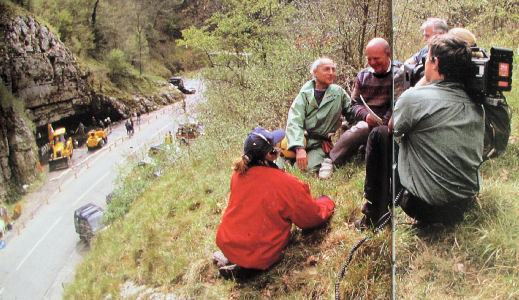Jody Passanisi and Shara Peters have recently posted a guest blog on the Scientific American entitled What is so hard about research? which looks at the problems of getting students to think imaginatively about research and the available research tools, and commenting that they tend to look for quick and easy options rather than stop and think about the problem. In reply I have posted the following comment.
Sunday, 23 June 2013
Do Prairie Dogs have a sophisticated communication language

In trying to model the neural code in human and animal brains one of the key factors to be considered is that of language and whether the biological foundations of human language are significantly different to other animals - or just an existing feature stretched to a significant extent - rather like a giraffe's neck. is a stretched version of a "normal" mammal neck. My own feeling is that virtually all our language is a product of culture - and the more rapidly a brain can absorb culture the more sophisticated the language can become - in something akin to an autocatalysed chemical reaction.
I am therefore extremely interested in the work of Professor Con Slobodchikoff, as described in Animal Behaviorist, with video, at TheAtlantic.com. Experiment show that not only do their calls distinguish between different threats, but that the calls appear vary to convey additional information - distinguishing between, for example, between a tall human in a blue shirt and a short human in a yellow shirt. It addition there are complex "chatter" between individual prairie dogs which the researchers have no idea how to interpret, different groups of the same species living in different places have different dialects of the "same" language, while different species appear to use different vocalizations.
Following a holiday and other distractions I am about to return to drafting my detailed notes on the evolutionary implications the ideal brain model (see From the Neuron to Human Intelligence: Developing an “Ideal Brain” Model). Research such as this, which suggests that we have underestimated the ability of animals to communicate with each other, makes it much easier to argue that our brain works in the same way as the brains of many other animals - except that ow brain has adapted to handle large quantities of cultural information.
Looking back Half a Century on some Holes in the Ground.
 |
| The Old Farm Barns at Higher Kiln Quarry circa 1961 |
 |
| Reopening the refurbished Museum |
 |
| The Trust celebrate with a meal |
However the contact with the Trust reminded me of some unfinished work from the 1960's. While I was supposed to be studying chemistry I actually made some detailed notes relating to the formation of caves, particularly in the Buckfastleigh area. However the work was never finished as I was to busy earning a living and raising a family. As a result the bulk of my observations were never published.
 |
| Filming the Time Team Programme |
My renewed interest in the caves, and in particular a look at some of the exhibits in the museum, has reminded me about my unpublished notes - and in particular the need for lateral thinking in understanding how the caves formed. I therefore took the opportunity to make contacts to see if I can get some photographs taken of some important geological features - mainly relating to the shape of the roof of cave passages and chambers. There is no way, at 75, that I could safely re-enter the caves, and such pictures will help me to document my original notes in a scientifically usable form. The result could well be a couple of serious papers - plus further information which I could well publish on this blog.
Subscribe to:
Posts (Atom)
